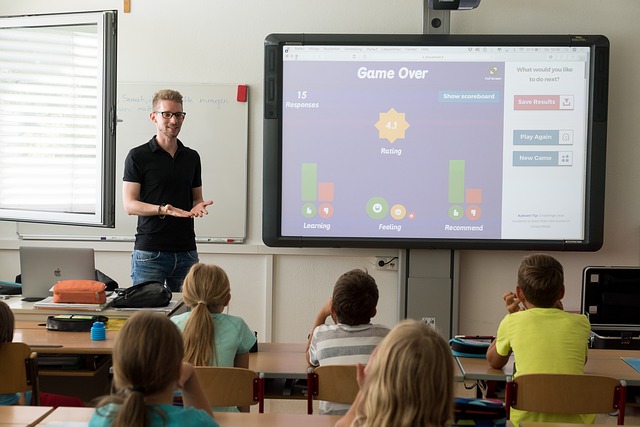
Nothing can fill an English teacher with dread quite like teaching revising and editing. Most don’t choose to teach English because of some deep love of grammar. (Those people get jobs at ProWritingAid instead!) They teach English because they love literature and poetry. They love analyzing themes and teaching students how to express themselves through writing.
Nevertheless, revising and editing is an important part of an English teacher’s job. It’s on many standardized tests in the United States. It’s even on the SAT and ACT!
Traditionally, revising and editing are taught through worksheets. Past generations learned through sentence mapping. But students are quick to rebel against work they find boring.
Luckily, there are many engaging, student-centered ways to teach even the most dreaded lessons.
The Problem with Worksheets
Worksheets have their time and place in the classroom. Graphic organizers can be used effectively for synthesizing learning. And some topics, like using new grammar rules, need repetitive practice.
But worksheets are not engaging. Students work at different paces, which can lead to classroom management problems. Kids get bored with worksheets because the concepts aren’t presented in an interesting manner. This means that the concepts don’t stick.
An easy way to make worksheets more effective is the "I do, we do, you do" method. This is also known as the Gradual Release model.
Model a few revising and editing questions for the students. Make sure to think out loud about your process. It’s important for students to learn how to think through problems. Then work together to complete a few questions. Ask for student input through random questioning. Encourage them to explain their thinking. Finally, release the students on their own to finish the page.
You can also flip the Gradual Release model on its head. You do, we do, I do puts the initial responsibility on the students. They can try to figure out how to correct sentences on their own. Then the class comes together to solve more problems. Encourage discussion and have students justify their conclusions. Give a quick assessment of their learning before moving on to the "I do" portion so you can clear up any confusion.
Student Conferences
The best way for students to learn proper grammar is from their own work. English teachers spend a lot of time correcting essays, but then what happens? Most of the students glance at their grades then never look at the papers again.
My tenth-grade English teacher taught me more about grammar, syntax, and fluency than any other teacher. She had a chair next to her desk for student conferences. She’d get the class started on individual work, like reading a novel, then call us up one by one. She would go through our essays pointing out errors and explaining why they were incorrect.
It never took very long. And student conferences are an excellent method for differentiation. Meet your students where they are. If you have a low-performing student, focus on one or two basic issues like capitalization or end-of-sentence punctuation. For your high achievers, point out things like parallel structure mistakes and comma splices. The point is growth, not perfection.
Student conferences also help form student relationships and teach students how to take constructive criticism. When I was writing my college essays, I went back to my tenth-grade teacher instead of my senior teacher because I trusted her feedback.

Social Media Editing
Social media is a constant distraction. It’s hard to keep up with which platforms our students are on. They love it. So why not use it as a teaching tool?
I first used this strategy when I was a tutor. One of my students was complaining about how much trouble she had with the revising and editing questions. Her end-of-course exam was coming up, and she was completely stressed out. All they did in class were worksheets and practice questions, and it wasn’t sticking.
“Edit your friends’ Facebook posts,” I suggested on a whim. She looked at me like I was crazy. But then I asked her if her friends use proper spelling and grammar online. Of course, they didn’t! With the caveat that she wouldn’t then point out their mistakes to them, which would be rude, I told her to take a piece of paper and rewrite her friends’ posts.
She came back the next week and told me how much it had helped. She was much more confident than before. She had put what she learned into real-life practice.
Years later, I taught an advanced grammar class and developed a social media project. Students were to screenshot school-appropriate social media posts then “translate” them in the fashion of No Fear Shakespeare. In order to discourage doxing and cyberbullying, I changed a few things. They could use their own social media posts or public posts by celebrities.
Most of the posts had far more than one grammatical issue. This is another reason why this method is more effective than worksheets: the work was harder than anything they would see on the test. Students often came to me asking how to fix something that they knew was wrong but didn’t know why. By the time they saw revising and editing questions, they seemed simple by comparison.
Here are a few other benefits of the social media project:
- Effective use of technology by connecting with the wider world
- Student choice in choosing posts
- High engagement because students get to use social media in class
If you’re worried about setting your kids free on the internet, or your school has strict technology policies, you can instead select some posts from your students’ favorite celebrities. Print them out or put them on a slideshow and have students edit those.
Grammar Relay Races
We love activities where we can get our kids up and moving around. But that’s not always easy to do when you’re teaching revising and editing. For this next activity, we’re going to take a page out of the math teachers’ book.
Remember board races? The teacher would give kids the same math problem to work on the board. The kids would compete to solve it the fastest. It was exciting to use the teacher’s whiteboard. And nothing gets kids engaged better than a little competition.
This activity takes very little preparation. Find some sample sentences with grammar or spelling errors. (I wouldn’t recommend picking a sentence with more than three errors.) Put each of these sentences on individual pages in a Word or Google document. Project one at a time directly onto the dry erase board.
Divide your class into two teams and give each team a different color dry erase marker. A student from each team will then race to the board when you say “go!” and add the corrections with their marker. If that’s a little too chaotic, have them hit a buzzer when they know what to do before going to the board.

Expert Groups
As a teacher, I loved any type of peer-to-peer learning. It encouraged academic conversations and allowed me to step back as a facilitator. One of my favorite strategies to use was expert groups. This is a popular AVID strategy and can be used in many different settings.
Divide your class into four to six groups, whichever works for your class size. This is a great opportunity for creating heterogeneous learning groups, and you can assign roles within groups to help with classroom management issues.
Assign each group a different grammar rule and give them resources to learn about it, whether it’s a textbook or a website. First, they must practice using this rule so they understand it. Give them just a few questions. Then, they will create a poster explaining this rule to their classmates. Finally, they should create practice sentences for their peers along with an answer key.
Have them present to the whole class or teach it to small groups jigsaw-style. You can also leave their posters up as anchor charts.
Final Thoughts
Revising and editing isn’t always the most exciting part of teaching English. But your lessons don’t have to be boring! The more engaging your lessons, the better your students will learn revising and editing skills for both standardized tests and overall better communication. Pick one of these fun strategies for your next grammar lesson!

